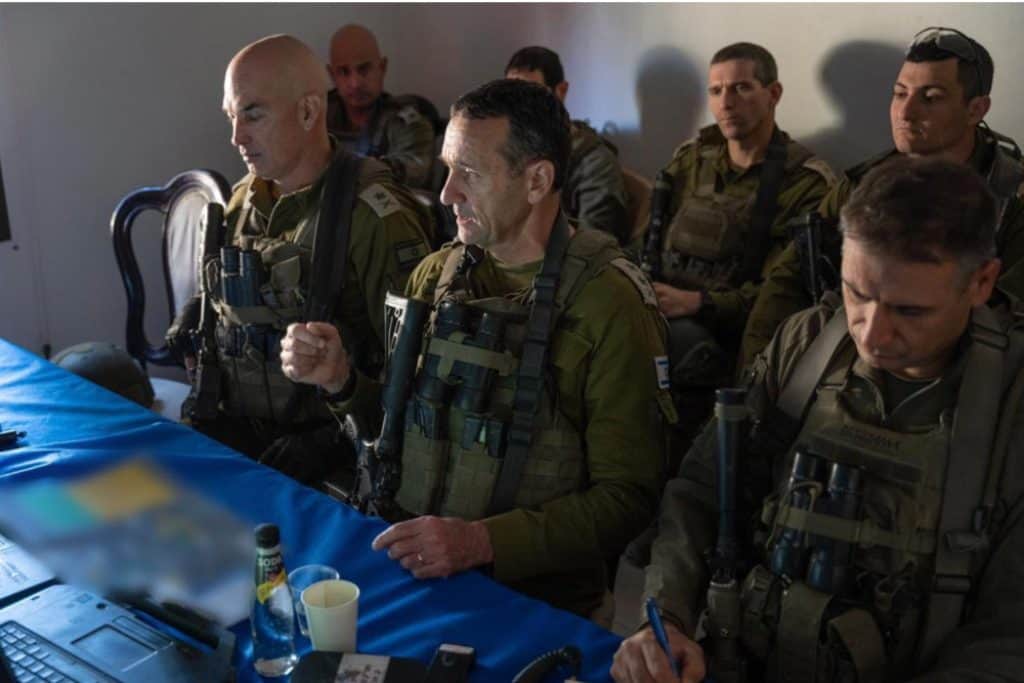
The Israel Defense Forces (IDF) conducted airstrikes on the Al-Qard al-Hassan Association, a group the IDF said is “used to finance Hezbollah’s terror activities.” The strikes occurred as the IDF continues to operate on the ground in southern Lebanon, and they represent a new phase of operations for Israel after a month of war against Hezbollah.
The IDF warned civilians to evacuate dozens of locations across Lebanon that are part of the Al-Qard al-Hassan Association, which an Israeli intelligence office described as similar to a bank and used by many Shiite Lebanese. However, the institution is not connected to the global financial system via systems such as the Society for Worldwide Interbank Financial Telecommunications (SWIFT) used by traditional banks.
“It’s purposely created to avoid sanctions,” an Israeli official noted. This alternative system enables Hezbollah to benefit and avoid repercussions abroad for its terrorist activities. Israel’s waves of airstrikes are designed to harm the grip that Hezbollah has on large parts of Lebanese society via institutions such as Al-Qard al-Hassan.
The recent targets represent a new phase of the operations, given Israel has reduced its airstrikes on Hezbollah in Beirut over the past two weeks. The IDF began operation “Northern Arrows” in Lebanon on September 23, initially focusing the air campaign on weakening Hezbollah’s senior command and control elements, including killing Hezbollah leader Hassan Nasrallah. From September 23 to October 1, the IDF’s aerial campaign hit more than 1,000 targets.
On October 1, the IDF launched a ground offensive that now includes four divisions conducting relatively limited operations close to the border. These methodical and complex operations aim to find Hezbollah munitions and tunnels and uproot other terrorist infrastructure in Lebanese villages.
The latest moves against Hezbollah’s financial institutions shift the battle from removing the group’s command-and-control nodes and defeating its borderline units to reducing its parallel state-like institutions in Lebanon.
“We struck close to 30 targets across Lebanon, a type of Hezbollah’s financial system, ‘Al-Qard al-Hassan,’ which receives funds from Iran, provides loans, and ultimately finances Hezbollah’s terrorism,” IDF Chief of Staff Lieutenant General Herzi Halevi said on October 21. Halevi visited southern Lebanon with several Israeli commanders, including the head of Northern Command, Major General Ori Gordin, and the commander of the 98th Division, Brigadier General Guy Levy.
Halevi said the IDF was also striking Hezbollah commanders, from the most senior leaders to the “lower command levels.” He added that “this overall effort forms a complementary response, including against Iran, which ultimately funds, sends weapons, and dispatches personnel here. Be aware that we are addressing that aspect as well.” The latest efforts against Hezbollah come as the IDF continues to prepare for strikes on Iran in response to the Islamic Republic’s ballistic missile attack on Israel on October 1.
The IDF also revealed the presence of a bunker it said was linked to the late Nasrallah. The bunker “serves as a central financial facility for the Hezbollah terrorist organization and was built beneath the Al-Sahel Hospital,” the IDF said, adding, “There are millions of dollars in gold and cash in Hassan Nasrallah’s bunker.” IDF Spokesperson Rear Admiral Daniel Hagari released a videotaped statement and showed footage of the tunnel’s location.
Israel believes it has eliminated seven Hezbollah brigade commanders over the month-long campaign. In addition, the Israeli military assesses that it has taken out 21 of the group’s battalion commanders and 24 company commanders while striking 3,200 targets, including 300 between October 20 and 21. Around 1,200 Hezbollah members have also been eliminated. This total is in addition to around 400 to 500 Hezbollah members killed between October 8, 2023, and September 17, 2024, a period in which the group released the names of most of its fallen fighters.
The overall impact of these operations on Hezbollah remains to be seen. The group has continued firing between 100 and 200 projectiles at Israel daily. For instance, on October 19 and October 20, 200 projectiles were launched per day. On October 21, the IDF said 170 projectiles were fired. Most are rockets, although some are kamikaze drones.
Nevertheless, according to reporting by Ynet, the Israeli military believes that only one-third of Hezbollah’s pre-October 2023 arsenal remains. If the group began the war with an estimated 150,000 rockets and 2,000 drones, it may have 50,000 rockets and hundreds of drones remaining. It’s not clear how many munitions Hezbollah may be able to produce monthly or import from Iran and other sources. If the group maintains a rate of firing 100 rockets per day, it could continue this pace of attacks for a year, even with the recent losses to its arsenal.







